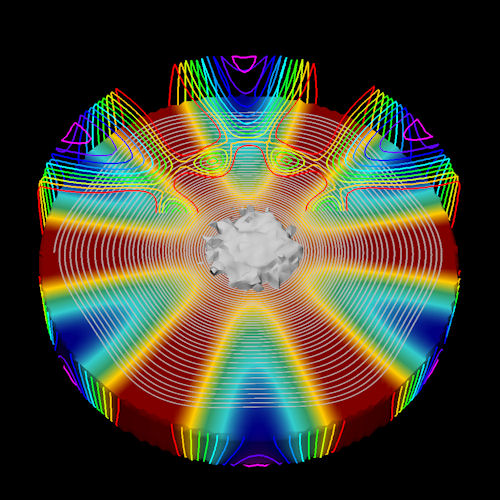December 4, 2001
By Anthony J. Lockwood
Dear Desktop Engineering Reader:
 A week ago, Tech-X introduced version 6.0 of its Vorpal software for simulating phenomena encountered in electromagnetics, microwave devices, plasma discharges, and laser plasma accelerators. This will interest you in one to six ways at minimum. But first, this being Thanksgiving in the US: The Toastmasters’ intro to Vorpal.
A week ago, Tech-X introduced version 6.0 of its Vorpal software for simulating phenomena encountered in electromagnetics, microwave devices, plasma discharges, and laser plasma accelerators. This will interest you in one to six ways at minimum. But first, this being Thanksgiving in the US: The Toastmasters’ intro to Vorpal.
Vorpal is actually the framework that underlies the company’s suite of discipline-specific modeling and simulation applications. I’ll get to the discipline-specific applications in a moment. Vorpal appears to leverage the latest physics algorithms, some of which my contact at Tech-X told me—as an aside, mind you—the company developed and published. What can I say? Smart people.
Anyway, Vorpal uses what are called PIC (Particle-in-Cell) methods to model the kinetic behavior of particles and electromagnetic phenomena. Really, what you’re talking about is the oomph for simulations involving Wakefield accelerators, plasma thrusters, high-power microwave guides, and plasma processing chambers. Photonic crystals, resonant cavities, two-stream instability, and similar complex physics simulations are all comfortably within its wheelhouse. It appears that Vorpal is so scalable it runs on pretty much anything from desktop machines to massively parallel supercomputers, but HPC is surely where it can shine for you.
The discipline-specific simulation applications leverage Vorpal. All start with “VSim,” which I assume means “Vorpal Simulation.” There are five offerings plus a Pro version. The latter is the whole enchilada for computationally intensive electromagnetics, electrostatic, and plasma simulations. At the other end, Tech-X’s VSimBase is for learning the basics of electromagnetic, particle trajectory, and plasma physics.
In between are the dedicated applications for simulating electromagnetics, microwave devices, plasma devices, and plasma accelerations. Each application is customized with features requisite for the job. For example, VSimMD for microwave devices includes a full slate of electromagnetic and particle modeling features for magnetrons, klystrons, gyrotrons, TWTs (traveling-wave tubes), and similar devices.
For plasma, VSimPD performs numerically efficient kinetic modeling of discharge devices that enable you to visualize the resolution of kinetic effects—something you can’t see in fluid simulations. One of Vorpal’s differences vis-à-vis electromagnetics is that it’s an FDTD (finite difference time domain) code, so it handles broad frequency ranges. And the specialized features, tools, and capabilities go on like that through all areas of interest.
I can’t cram all there is to say about the Vorpal suite into the allotted space. So, check out the link over there. Go over to the right-hand side of the page and click on the Animations tab. They’re very short and very captivating, especially the Tesla Cavity and the parallel plate multipactor clips.
Vorpal 6.0 seems to be one of the more interesting tools for plasma and electromagnetics simulation. Hit the link over there and see if you agree.
Thanks, Pal. – Lockwood
Anthony J. Lockwood
Editor at Large, Desktop Engineering
Subscribe to our FREE magazine, FREE email newsletters or both!
About the Author
Anthony J. Lockwood is Digital Engineering’s founding editor. He is now retired. Contact him via [email protected].
Follow DE





